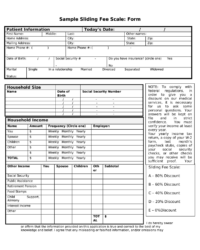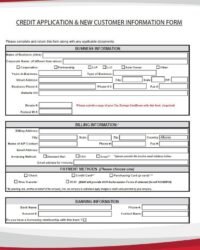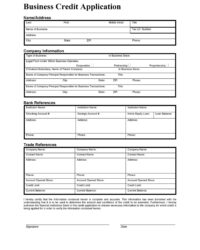Implementing an adaptable pricing model fosters inclusivity by accommodating diverse financial circumstances. It broadens access to essential services, builds stronger client relationships based on trust and transparency, and can contribute to a more equitable and sustainable business model. A well-designed form streamlines the application process, making it efficient for both the client and the provider.
Further exploration will cover practical considerations for developing and implementing such a system, including legal and ethical implications, best practices for data collection, and strategies for clear communication with clients.
Key Components of a Flexible Pricing Application
Effective flexible pricing structures rely on a well-designed application process. Several key components ensure clarity, fairness, and efficient administration.
1: Clear Instructions: Concise and easy-to-understand instructions guide applicants through the process, minimizing confusion and ensuring accurate completion.
2: Income Verification Options: Offering various income verification methods, such as pay stubs, tax returns, or self-declaration with supporting documentation, accommodates different situations and promotes accessibility.
3: Household Size Information: Collecting data on household size provides context for income levels and helps determine an appropriate fee based on individual circumstances.
4: Explanation of Sliding Scale Tiers: Transparent presentation of the pricing tiers, including the income ranges and corresponding fees, builds trust and clarifies expectations.
5: Confidentiality Statement: A clear statement assuring applicants of the privacy and security of their financial information is crucial for ethical practice and building trust.
6: Review and Appeal Process: Outlining a process for applicants to review decisions and request adjustments ensures fairness and addresses potential discrepancies.
7: Contact Information: Providing clear contact information for questions and support facilitates communication and enhances the applicant experience.
These elements contribute to a transparent, equitable, and user-friendly application process, promoting accessibility and fostering positive client relationships.
How to Create a Flexible Pricing Application
Developing a well-structured flexible pricing application requires careful consideration of several factors. A systematic approach ensures clarity, fairness, and ease of administration.
1: Define Pricing Tiers: Establish clear income brackets and corresponding fees. Consider market rates, operational costs, and the target demographic when setting these parameters. Thorough market research and financial analysis inform equitable and sustainable pricing tiers.
2: Develop Application Form: Create a user-friendly form that collects essential information, including income, household size, and relevant supporting documentation. Clarity and simplicity enhance the applicant experience.
3: Establish Verification Procedures: Implement secure and respectful methods for verifying applicant information. Options may include self-declaration with supporting documentation, pay stubs, or tax returns. Balance thoroughness with respect for client privacy.
4: Outline Review and Appeals Process: Establish a clear process for applicants to review decisions and request adjustments. This promotes fairness and addresses potential discrepancies. Transparency and accessibility are crucial.
5: Develop Communication Strategy: Clearly communicate the flexible pricing policy to potential clients. Transparency builds trust and encourages utilization. Provide readily available resources outlining the application process and eligibility criteria.
6: Train Staff: Equip staff with the knowledge and resources to administer the application process effectively and sensitively. Consistent training ensures equitable application of the policy.
7: Regularly Evaluate and Adjust: Periodically review the effectiveness and fairness of the flexible pricing structure. Gather client feedback and analyze program data to identify areas for improvement. Regular adjustments maintain relevance and efficacy.
A robust flexible pricing structure requires a well-defined framework and ongoing evaluation. Careful implementation and transparent communication foster client trust and ensure equitable access to essential services. Periodic review and adaptation maintain the program’s long-term effectiveness and relevance.
Flexible pricing application forms provide a structured approach to offering tiered services based on affordability. Careful consideration of design elements, ethical implications, and administrative procedures is crucial for successful implementation. Key components include clear instructions, transparent pricing tiers, and secure verification processes. Regular review and adaptation ensure continued relevance and effectiveness.
Ultimately, equitable access to essential services strengthens communities and fosters a more inclusive society. Organizations offering services should evaluate the potential benefits of adopting a flexible pricing structure to broaden reach and better serve diverse populations.


